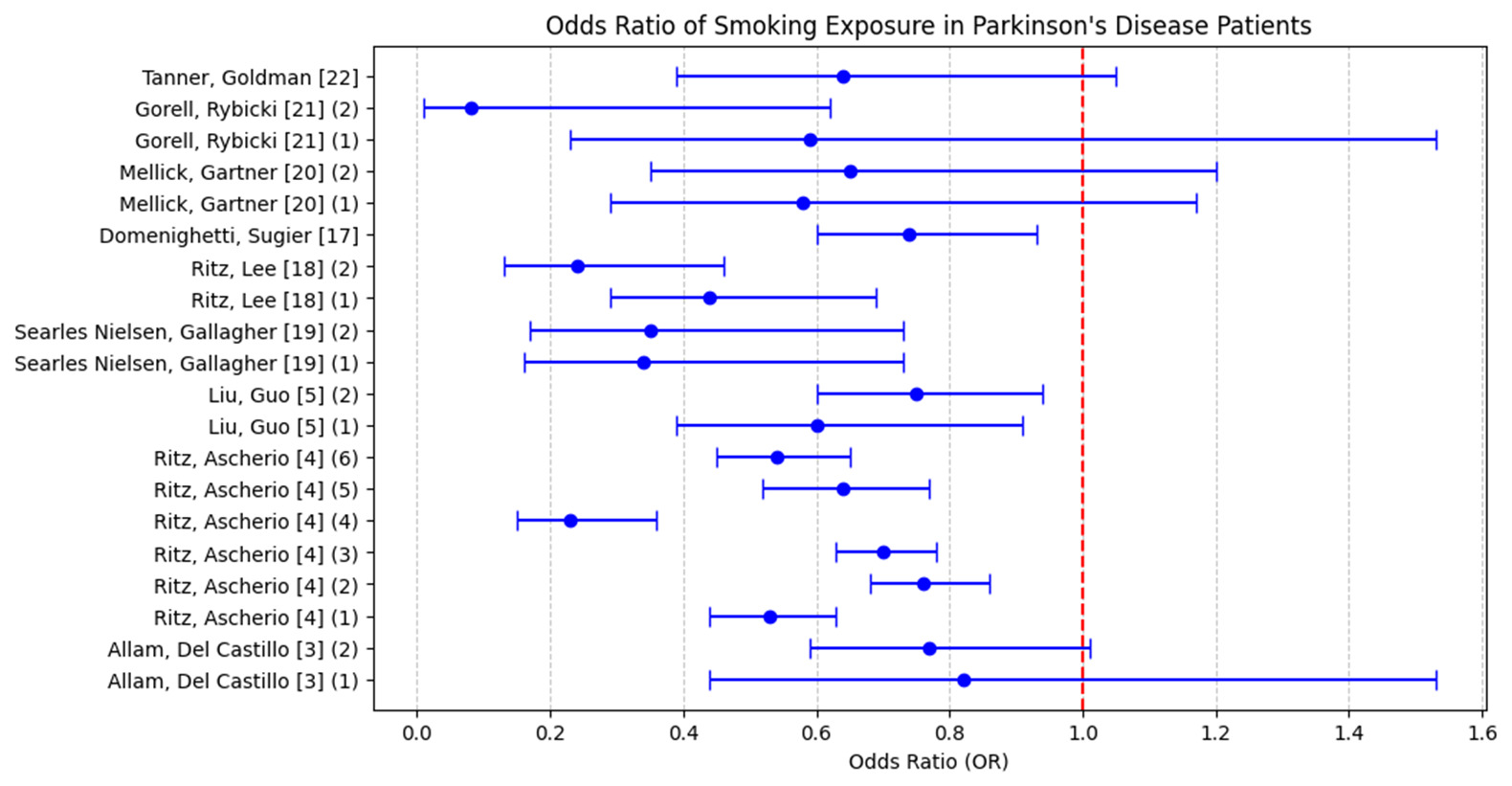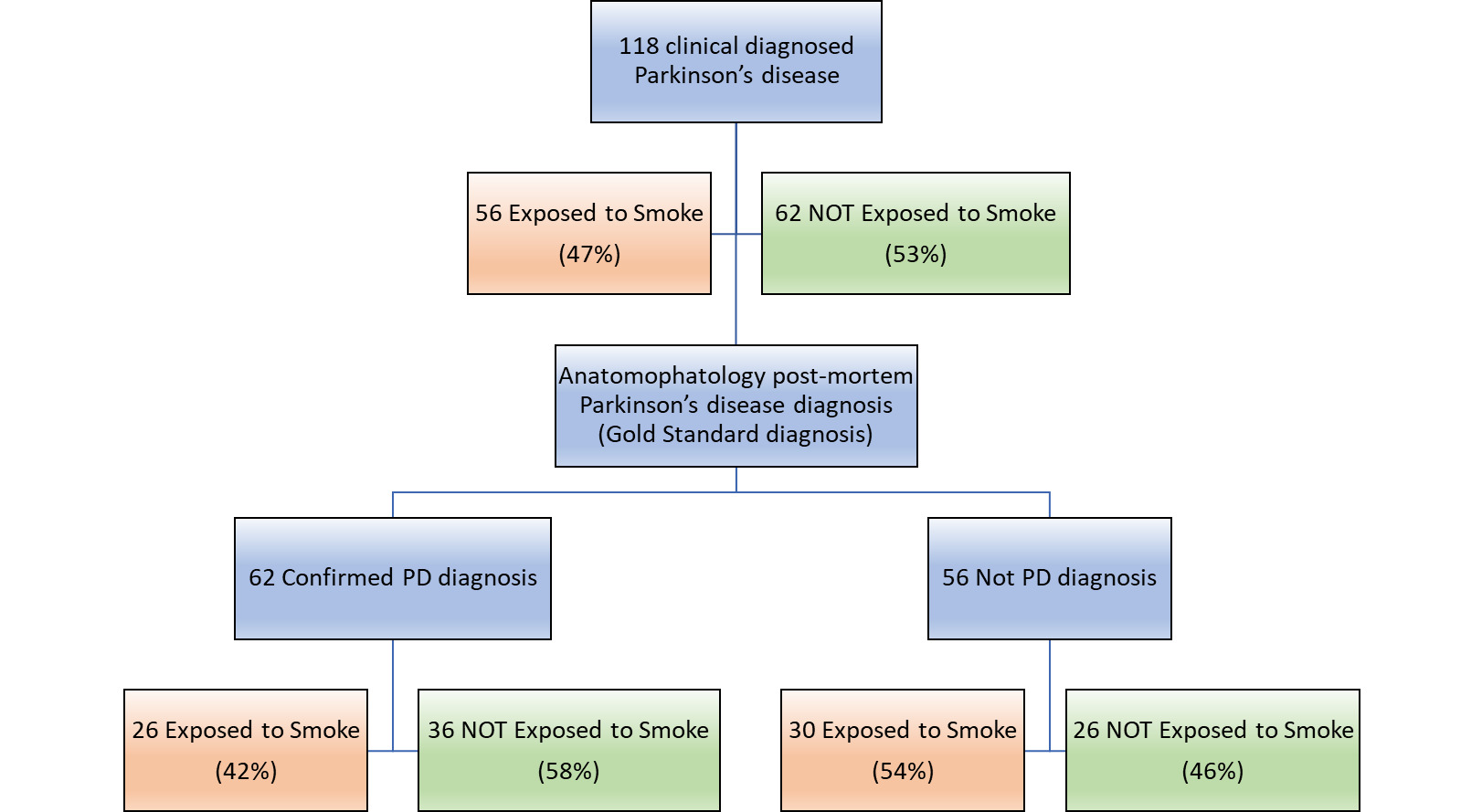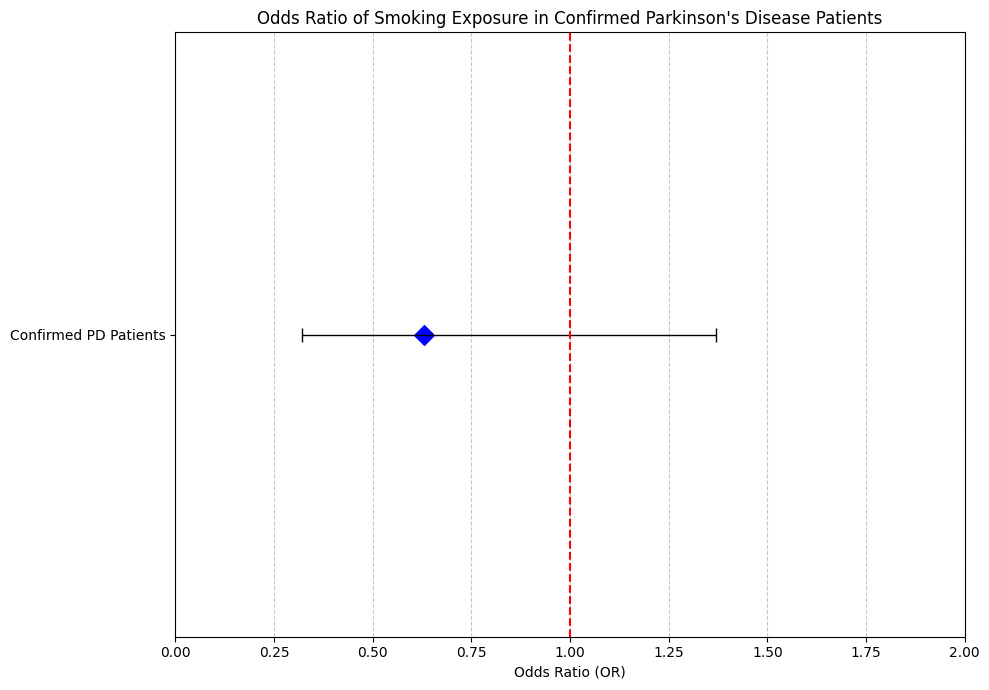Category: Parkinson's Disease: Pathophysiology
Objective: The aim of this study is to investigate the relationship between smoking and Parkinson’s disease in pathology validated Parkinson’s disease patients.
Background: Literature has pointed out an apparently protective role of smoking on Parkinson’s disease, unveiling a reduced risk for both current and former smokers [1-3] [figure1]. However, a truly protective effect of smoking has been questioned and, additionally, if such neuroprotection is common among all parkinsonian syndromes or, conversely, is specific for idiopathic Parkinson’s disease is an unsolved question.
Method: In the present case-control study we enrolled 118 patients from the UK Brain Bank with an alive clinical diagnosis of Parkinson’s disease, that underwent a post-mortem pathology validation. The pathology analysis was used as the gold standard to label enrolled subjects as idiopathic Parkinson’s disease (True positive) and parkinsonian syndromes (False positive). Smoking habit data were assessed for both pathology-confirmed and clinically misdiagnosed Parkinson’s disease patients [figure2]. The odds relative to smoking data were estimated for the two diagnostic groups and statistical analysis was subsequently conducted to estimate the strength of the association.
Results: Through chart review, we found that 53% of the alive clinically diagnosed Parkinson’s disease patients had no smoking exposure. Among pathology-confirmed Parkinson’s disease patients, 58% had no smoking exposure, while 46% of clinically misdiagnosed patients were not exposed to smoke. The Odds Ratio for the association between smoking exposure and the two groups was 0.63 (95% CI: 0.32 – 1.37). The Chi-square test demonstrated a p-value of 0.2804. [figure3]
Conclusion: This study highlights the role of smoking exposure in Parkinson’s disease. Our findings suggest that the observed correlation is not exclusive to idiopathic Parkinson’s disease, but rather represents a wider occurrence that includes a range of parkinsonian disorders. A neuroprotective effect of smoking, common risk factors or a reverse causation mechanism are all putative explanations for reduced smoking exposure.
Literature data on smoking exposure in PD.
Diagram of findings from case-control analysis
Odds ratio of smoke exposure in confirmed PD
References: 1. Quik, M., Smoking, nicotine and Parkinson’s disease. Trends in neurosciences, 2004. 27(9): p. 561-568.
2. Li, X., et al., Association between cigarette smoking and Parkinson’s disease: a meta-analysis. Archives of gerontology and geriatrics, 2015. 61(3): p. 510-516.
3. Hershey, L.A. and J.S. Perlmutter, Smoking and Parkinson disease: where there is smoke there may not be fire. 2014, AAN Enterprises. p. 1392-1393.
To cite this abstract in AMA style:
P. Pecoraro, S. Carbone, F. Alessi, V. Di Lazzaro, L. Di Biase. The role of pathology validation on the association between smoking and Parkinson’s Disease [abstract]. Mov Disord. 2024; 39 (suppl 1). https://www.mdsabstracts.org/abstract/the-role-of-pathology-validation-on-the-association-between-smoking-and-parkinsons-disease/. Accessed December 16, 2025.« Back to 2024 International Congress
MDS Abstracts - https://www.mdsabstracts.org/abstract/the-role-of-pathology-validation-on-the-association-between-smoking-and-parkinsons-disease/



